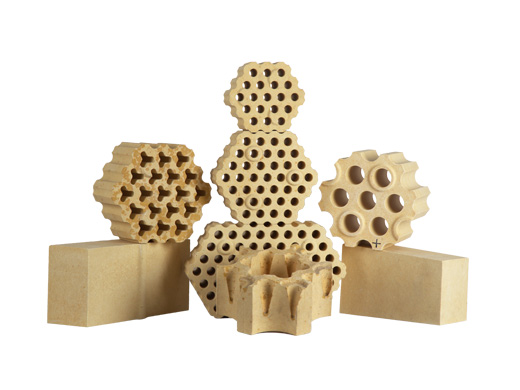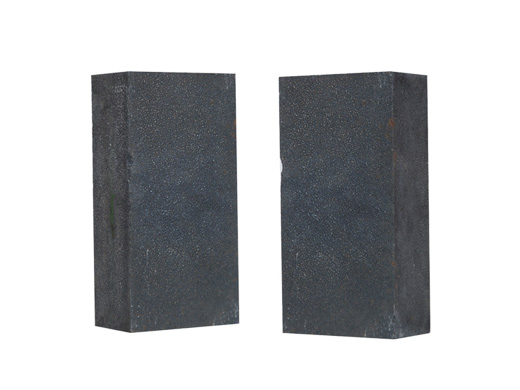Diverse Composition of AZS Refractory brick Explored
Industry news | Refractory Wiki | Refractory news | Enterprise news |Introduction
AZS bricks, also known as alumina-zirconia-silicon bricks, are engineered firebricks made from an exact mixture of alumina (a), zirconia (Z), and silica (S). This combination forms a powerful material with excellent resistance to high temperatures, chemical corrosion and thermal shock. Its superior quality makes it a popular choice for a variety of industrial applications.
What is the composition of AZS brick?
Due to their excellent chemical and physical properties, AZS bricks are widely used in high temperature applications such as glass kilns. In the following paragraphs, we will delve into the components of AZS bricks and reveal the key components that contribute to their superior performance.
Alumina (A):
The first element in the composition of AZS bricks is alumina (A), which is derived from high-purity alumina sources. Alumina provides strength and stability to the brick structure, ensuring resistance to thermal shocks and corrosion. Its presence helps maintain the integrity of the brick even in the extreme temperatures experienced in glass furnaces.
Zirconia (Z):
The second significant component of AZS bricks is zirconia (Z). Zirconia, obtained from zircon sand or other zirconium compounds, enhances the refractory properties of the brick. It greatly increases the resistance of AZS bricks to the corrosive effects of molten glass, chemicals, and alkalis. Zirconia also contributes to the low porosity and high density of AZS bricks, ensuring their excellent performance in glass furnace environments.
Silica (S):
Silica (S) forms the third essential element in the composition of AZS bricks. Sourced from high-quality silica, it aids in reducing the thermal expansion coefficient of the brick. This property is crucial in minimizing the risk of cracking and spalling when exposed to rapid temperature changes. Silica also offers additional resistance to chemical corrosion, ensuring the longevity of AZS bricks under harsh operating conditions.
Additional Additives:
AZS bricks may also contain small quantities of other additives to further enhance their properties. These additives can include magnesia (MgO), which improves the corrosion resistance of the brick, and chrome oxide (Cr2O3), which enhances its thermal shock resistance. The specific composition and dosage of these additives can vary depending on the desired characteristics of the AZS bricks.
AZS bricks perform well in high-temperature applications thanks to their special composition. A combination of alumina, zirconia and silica forms the basis of these bricks, providing strength, corrosion resistance and low thermal expansion. In addition, the addition of additives further enhanced its performance.
What is the melting point of AZS refractory brick?
Understanding the melting point of AZS refractory bricks is crucial for evaluating their suitability and performance in high-temperature applications.
Defining the Melting Point:
The melting point refers to the temperature at which a solid material transforms into a liquid state. When it comes to AZS refractory bricks, the melting point represents the critical temperature at which these bricks start to liquefy and lose their solid structure. This characteristic is vital in determining their ability to withstand extreme heat conditions.
Factors Influencing the Melting Point:
Several factors influence the melting point of AZS refractory bricks. The composition of the bricks, including precise ratios of aluminum oxide (A), zirconium oxide (Z), and silica (S), plays a significant role. Additionally, the purity of these components and the manufacturing process employed can impact the melting point.
Melting Point and Performance:
The melting point directly affects the performance characteristics of AZS refractory bricks. Bricks with higher melting points can endure higher temperatures without undergoing significant structural changes. This property ensures that the refractory bricks remain stable and retain their integrity when exposed to intense heat, preventing premature failure or deformation.
AZS Refractory Bricks and High-Temperature Applications:
AZS refractory bricks, renowned for their excellent thermal shock resistance and chemical stability, find extensive usage in high-temperature applications. Thanks to their high melting points, these bricks can withstand the extreme temperatures found in glass furnaces, cement kilns, and various industrial processes. By maintaining dimensional stability and preventing excessive wear, AZS refractory bricks contribute to the efficiency and longevity of these operations.
Measuring the Melting Point:
The melting point of AZS refractory bricks is typically measured using specialized equipment such as a refractoriness tester or a high-temperature furnace. These instruments subject the bricks to increasing temperatures until they reach their melting point, enabling accurate measurements.
The melting point of AZS refractory bricks is a fundamental parameter that determines their performance in high-temperature environments. Understanding this characteristic helps in selecting the appropriate refractory materials for specific applications. By withstanding extreme heat without compromising structural integrity, AZS refractory bricks ensure the efficient and reliable operation of industrial processes that rely on their exceptional properties.
What are the different types of AZS brick?
When it comes to AZS bricks, understanding the different types of materials available is crucial to choosing the right refractory for a particular application. In the following paragraphs, we will delve into the various types of AZS bricks, revealing their unique properties and uses.
Type 1: Standard AZS brick
Standard AZS bricks are the most commonly used type. Their excellent corrosion resistance and high melting point make them ideal for glass furnaces, electric arc furnaces and other high-temperature environment applications. These bricks are known for their balanced composition of alumina, zirconia and silicon dioxide, providing optimal performance under demanding conditions.
Type 2: Fused cast AZS brick
Fusion-cast AZS bricks are made using a special casting process that involves melting the raw material and then cooling it to form a dense crystalline structure. These bricks have excellent resistance to glass corrosion and are suitable for glass industry applications such as float glass tanks, melting crowns and electrodes. Fused cast AZS bricks are characterized by their high density and low porosity, ensuring excellent durability.
Type 3: Zirconia reinforced AZS brick
Zirconia reinforced AZS bricks contain added zirconia content, which improves their performance in aggressive chemical environments. These bricks are particularly useful in applications where there are high concentrations of alkali metals or where severe corrosion resistance is required. The addition of zirconia improves the overall wear resistance and thermal shock resistance of brick, and prolongs the service life of brick.
Type 4: Semi-insulated AZS brick
Semi-insulated AZS bricks are specifically designed for use in glass furnace areas undergoing thermal changes. Due to their unique composition, these bricks have higher thermal insulation properties, which can effectively hold heat and minimize heat loss. By reducing energy consumption, these bricks help save costs in the glass manufacturing process.
Type 5: Alumina reinforced AZS brick
Alumina reinforced AZS bricks, as the name suggests, have additional alumina content incorporated into their composition. This modification improves the thermal shock resistance and mechanical strength of the brick, making it suitable for applications involving rapid temperature changes and strong thermal cycling. These bricks are commonly used in areas such as glass furnace walls and tank heat accumulators.
Whether standard AZS bricks, fused cast AZS bricks, zirconia reinforced AZS bricks, semi-insulated AZS bricks or alumina reinforced AZS bricks, each type offers unique qualities to meet specific industry needs. By considering the attributes and benefits of each type, industries can make informed decisions to optimize their operations and increase the longevity and efficiency of their processes.
Conclusion
AZS bricks combine the strengths of alumina, zirconia and silicon dioxide to create a refractory that performs well in high temperature and corrosive environments. With their excellent heat resistance, corrosion resistance and thermal shock resistance, these bricks have become indispensable materials in glass manufacturing, steel production, ceramics and other industries. By taking advantage of the properties of AZS bricks, industry can increase efficiency, improve product quality, and extend equipment life.
Newest
- 2023-07-31
Properties of silicon nitride and its application in refract···...
- 2023-07-31
Properties of silicon nitride and its application in refract···...
- 2023-07-31
Properties of silicon nitride and its application in refract···...
- 2023-07-31
Properties of silicon nitride and its application in refract···...
- 2023-07-31
To explore the application of magnesia carbon brick in refra···...
Solution
- 2022-11-22
The technical requirements and production processes of fused···...
- 2022-09-06
Price Determinants of high alumina fire bricks...
- 2022-08-30
Technical performance and technology of silica mullite brick···...
- 2022-08-27
Refractory materials in various parts of the furnace and pre···...
- 2022-08-23
Magnesite chrome brick composition process classification...




